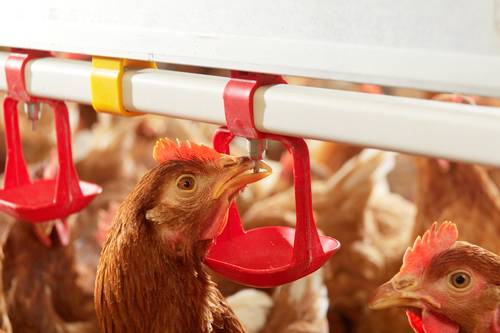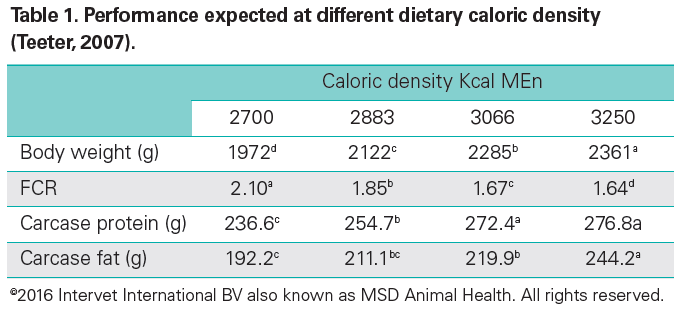



Coccidiosis Control to Maximise Feed Utilisation
This article from Linnea Newman, DVM, describes how achieving good control of coccidiosis can improve feed consumption and utilisation, and thus productivity.Broiler growth and feed consumption are not linear. Based on a Ross 308 as-hatched broiler, the final two weeks of feed consumption before slaughter at 28 days accounts for 50 per cent of the growing time, but 75 per cent of the feed that the broiler will consume.

The final two weeks of a 35-day broiler represent 40 per cent of the growing time, but 64 per cent of the feed consumption. For a 42 day broiler, the final two weeks represent only 33 per cent of the growing time, but 55 per cent of the feed consumption. At 49 days, the same two weeks represent only 29 per cent of the growing time, but 47 per cent of the feed consumption.
In other words, the last two weeks in the field are critical to the overall feed utilisation as the broiler will consume at least half of the total feed during this period of time.
This means that any disease or management insult during the final two weeks before slaughter can have a disproportionate adverse effect on feed utilisation and performance.
Poultry producers are aware of obvious clinical disease problems, but subclinical disease can be silently stealing performance by causing malabsorption or diverting energy to immune response instead of growth.
Subclinical coccidiosis during the final two weeks before slaughter is one of the most common and significant causes of performance loss in broilers. Anticoccidial programmes using ionophores or a chemical-ionophore shuttle often result in subclinical coccidiosis lesions at some point from 24-49 days of age, depending upon anticoccidial efficacy, bird density and environmental conditions.
Dr Robert Teeter (Prof. Emeritus, Oklahoma State University) converted the broiler performance loss due to subclinical coccidiosis into caloric equivalents (Arkansas Nutrition Conference, 2010).
He estimates that +2 subclinical coccidiosis during the final week before slaughter can make a 2.4kg broiler fed a 3250kcal diet perform as though it had been fed a 2700kcal diet. Even +1 subclinical coccidiosis can cause performance loss equivalent to feeding a 2975kcal diet (Table 1).
All of the effort and expense that is put into developing the ideal feed for maximum productivity can be lost due to very low levels of subclinical coccidiosis during the final week.
It is critical for all poultry producers to monitor the coccidiosis status of flocks throughout their growth cycle, but especially during the final two weeks before slaughter.
Producers can use postmortem sessions to look for lesions of subclinical coccidiosis. It is important to determine the species and severity of the infection, as well as the exact timing and frequency of affected flocks.
When postmortem is not possible, oocyst counts per gram of faeces can be made based upon sequential faecal samples collected at the farm. Oocyst counts cannot always predict the performance impact, but they can serve as a map to determine when subclinical coccidiosis is appearing during the growth of the flock. Samples should be collected twice per week to capture the rapid rise and fall of peak oocyst shedding to know when the challenge occurs.
Successful feeding programmes to maximise productivity must include a coccidiosis control strategy that avoids subclinical coccidiosis during the final 1-2 weeks in the field.













